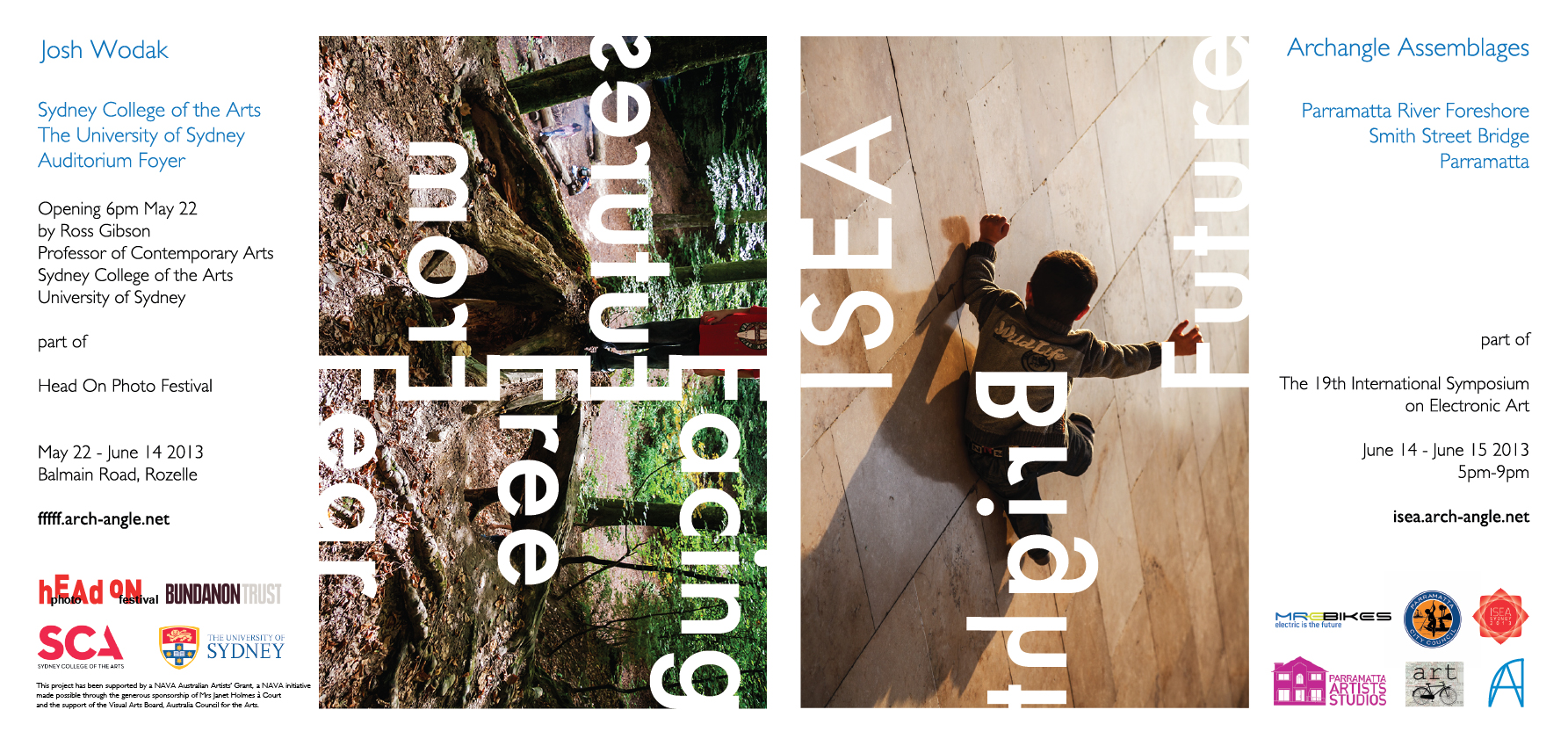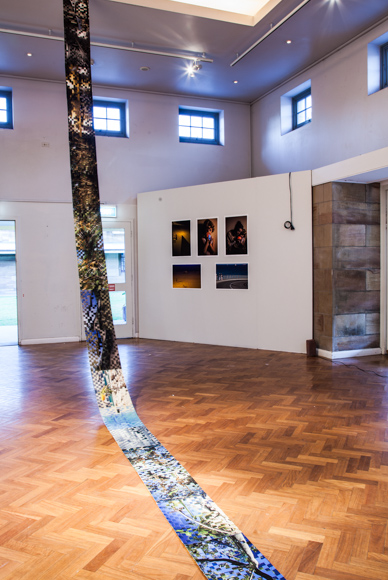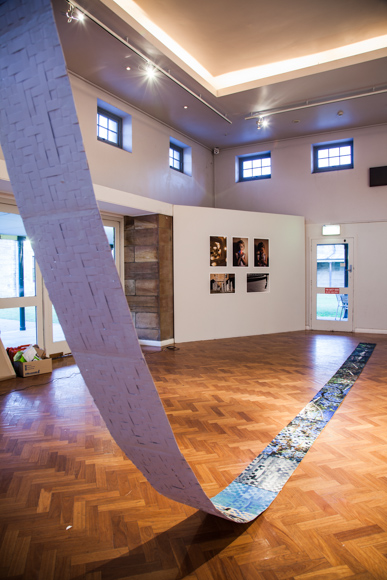
Facing Futures Free From Fear (2013)
Current installation
Sydney College of the Arts
Auditorium Gallery
Opening 6pm May 22
by Ross Gibson
Professor of Contemporary Arts
Sydney College of the Arts
University of Sydney
part of
Head On Photo Festival 2013
May 22 - June 14 2013
Balmain Road, Rozelle





The fable of King Canute and the sea goes that in 01028 the King took his throne to the sea shore and sat in it in while he demonstrated he could command the tide to stop rising before it reached his chair. The laws of gravity with the orbit of moon and the attraction of the sun continued as they were. The tide rose. He remained stationary. His body wet. The King retreated, either into a newfound humility toward the forces of nature or in recognition of not possessing dominion over nature.
One millennium later, in 02028, asteroid 1997 XF11 will pass us by, around 2.4 times the distance between the earth and the moon. The announcement of this 1km wide asteroid in March 01998 caused widespread alarm as the initial calculations predicated a remarkably higher likelihood of collision with the earth than any others in the near future. More accurate calculations quickly followed, which asserted there was no likelihood of impact, but not before the initial trajectory stirred a public imagination in asteroid XF11 being ‘the one’ that, on the balance of probabilities, this planet is long overdue to receive.
One month later, in April 01998, a highly influential article on climate change was published. This was the ‘hockey stick’ argument, so called because the graph showed relatively rapid temperature increases since the beginning of the 20th Century, relative to the time since King Canute. The 1000 years represented by this line form a shape like a hockey stick: relatively straight for a long period of time, followed by an exponential curve upwards over a relatively small timescale. The contours of the human arm+head share this shape: stretching your arm out flat, like in King Canute’s posture toward the sea he sought to control, you look back along a relatively straight line toward your fingertips. What the eyes cannot sea as clearly is the area of near-history: the approaching vertical rise beginning at the base of the neck and traveling up along the contours of the head. This near-history area is so close to our sensors that we appear to have a blind spot for it. Blind or not, we do know the head is significantly higher than the outstretched arm as we couldn’t otherwise see so clearly down the length of the arm.
The diptych portraits are set in the midst of this period of near-history: the year 02028. They show different sea level heights in ‘best case’ (less than 2° temperature increase) and ‘worst case’ (more than 2° temperature increase) scenarios over the century leading up to 02028. Their base rate is February 02010, which is one nutation of the earth before asteroid XF11 will pass by. It is within this single nutation that climate scientists are calling The Critical Decade: the period in which the tipping point for limiting increases to less than 2° will or will not be breached. The base rate is taken as the base of one’s neck as this is the universal height the sea comes up to on a buoyant body. It is us, any of us, treading water three summers ago in the sea. It is a situation of being in it up to our necks, with a narrowing margin remaining for the rate of rise to not outstrip the buoyancy of the body, like an ocean wave washing overhead while ones body remains stationary.
The difference between these futures boil down to the difference of 2°. Increases of less or more than 2° higher than the pre-industrial era are understood to be the main tolerance threshold for the physical systems which support life to continue functioning like they have in the unseasonably benign period since our civilisation emerged from its cradle. In one scenario for the future, these life support systems are maimed, yet marginally maintained: our mouth and nose sit above the level of the sea. In the other, life ceases to be life as we know it…
Three thousand millenniums earlier life on this planet made do with a concentration of 400 parts per million of C02 in the atmosphere, with average temperatures 3-4° warmer than today, and average sea levels 5-40 metres higher than now. As of May 02013, for the first time in the intervening three thousand millenniums, we have returned the atmosphere to a concentration of 400 parts per million of C02.
That wave that we have recreated rises up from our feet to well, well over our heads, and with it all the detritus of the lifeforms it subsumes in its path. That wave is a heatmap/timeline of the trajectory plotted by the Keeling Curve’s continuous vigil since 01958 of the increasingly increasing concentrations of C02 in the atmosphere, which eyes looking beyond our blind spot look to for the most authoritative barometer of what these critical numbers mean for how we face our futures. The wave is a tapestry of interwoven strips of Northern Territory, Far North Queensland and Tongan littoral zones, where these biomes at the front line meet the shifting shorelines. It paints a picture of colour/temperature from darkest/coldest to lightest/hottest, as expanded by two new colours added by the Bureau of Meteorology in January 02013 to compensate for the addition of 52° and 54° to our palette of life as we now know it. Meanwhile, the portraits stand in vigil side-by-side, encircling the wave that parts them, amidst a wall of voices on matters past, present and future.
Facing Futures Free From Fear has been assisted by the Sydney College of the Arts Research Residency Program, the Bundanon Trust Residency Program and supported by a NAVA Australian Artists' Grant, a NAVA initiative made possible through the generous sponsorship of Mrs Janet Holmes a Court and the support of the Visual Arts Board, Australia Council for the Arts.
It is a companion piece to ISEA Bright Future, an interactive audiovisual installation about communal energy production, biomimesis and bioluminescence. Both installations are on in Sydney in June 2013.